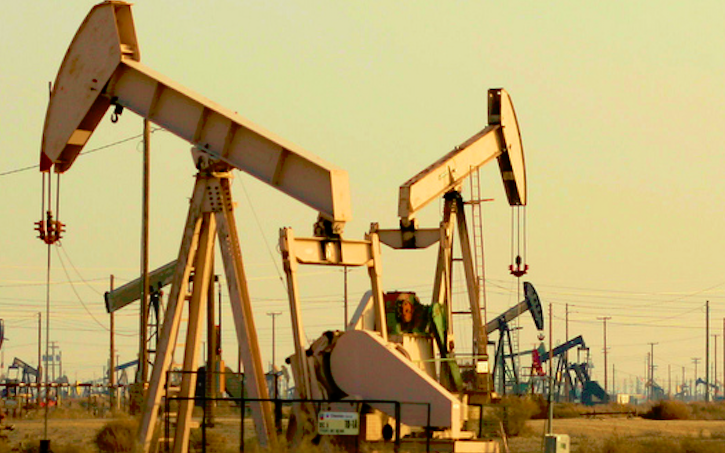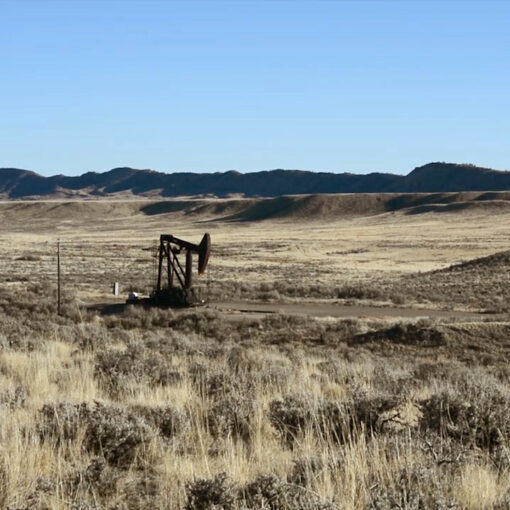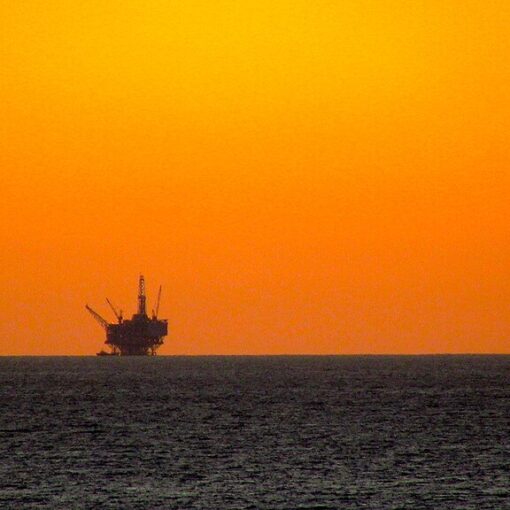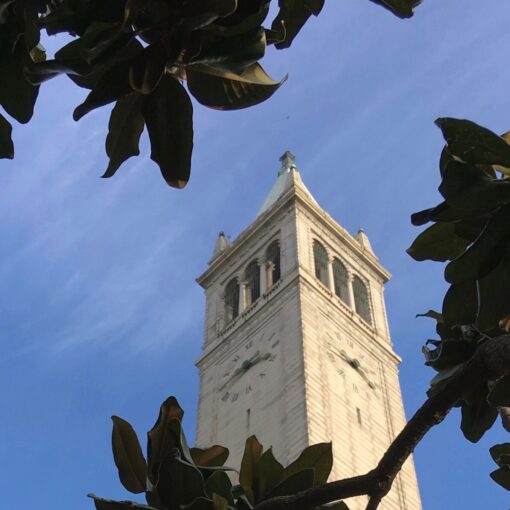By Romany Webb
 On Tuesday, September 18, the Department of the Interior’s Bureau of Land Management (BLM) finalized changes to its so-called Methane Waste Prevention Rule (“Rule”). The Rule, which was adopted in November 2016, aimed to prevent the loss of natural gas through venting, flaring, and leaks on public lands. BLM estimated that, as a result of the Rule, oil and natural gas producers operating on public lands would capture an additional 41 billion cubic feet of gas each year, enough to supply approximately 740,000 households. The Rule would also substantially reduce emissions of methane – i.e., the primary component of natural gas – which would fall by up to 180,000 tons per year.
On Tuesday, September 18, the Department of the Interior’s Bureau of Land Management (BLM) finalized changes to its so-called Methane Waste Prevention Rule (“Rule”). The Rule, which was adopted in November 2016, aimed to prevent the loss of natural gas through venting, flaring, and leaks on public lands. BLM estimated that, as a result of the Rule, oil and natural gas producers operating on public lands would capture an additional 41 billion cubic feet of gas each year, enough to supply approximately 740,000 households. The Rule would also substantially reduce emissions of methane – i.e., the primary component of natural gas – which would fall by up to 180,000 tons per year.
Despite these benefits, BLM has announced that it will repeal key provisions of the Rule and reinstate pre-2016 regulations (known as “NTL-4A”), which were first developed in the 1970s. Here are six important things to know about the announcement:
1. The rule change will affect a large number of oil and natural gas operations. The 2016 Rule applied to all oil and natural gas operations – both new and existing – on public and tribal lands. In this context, the term “public lands” refers to areas of land that are owned by the federal government, and managed by BLM. Those areas cover approximately 245 million surface acres and 700 million acres of sub-surface mineral estate. Of that, roughly 26 million acres are currently under lease to oil and natural gas developers, who are currently operating over 94,000 wells. Those wells account for a sizable share of total oil and natural gas production in the U.S. In Fiscal Year 2016 (the latest year for which data is available), onshore energy production on BLM-managed land accounted for seven percent of all oil, and 10 percent of all natural gas, produced domestically.
2. The rule change eliminates key restrictions on natural gas venting and flaring. In the original 2016 Rule, BLM sought to minimize natural gas wastage, particularly at oil wells, where associated gas (i.e., gas that is co-located with oil underground) is often vented or flared. To that end, BLM’s 2016 Rule established so-called “capture targets,” requiring oil producers to capture a specified percentage of all associated gas. The requirement was to become more stringent over time, with an initial capture target of 85 percent in 2018, increasing to 98% by 2026. However, those targets have now been rescinded, with BLM stating that it will not impose any gas capture requirements on oil producers. BLM argues that this will have little impact on the extent of venting and flaring because those activities are regulated by many states and, where no state regulations exist, BLM will require operators to comply with NTL-4A. However, as discussed below, neither the state regulations nor NTL-4A adequately control natural gas venting and flaring.
3. The rule change is likely to delay the detection and repair of natural gas leaks. A key goal of BLM’s 2016 Rule was to accelerate the detection and repair of natural gas leaks on public lands. To that end, the 2016 Rule required oil and natural gas producers to conduct quarterly leak inspections of compressor stations, and semi-annual inspections of other facilities. BLM has now rescinded those requirements, arguing that they would impose significant compliance costs on industry, and deliver only modest benefits. BLM also suggests that the requirements are unnecessary because the Environmental Protection Agency (“EPA”) has “analogous . . . regulations” requiring producers to detect and repair leaks. However, as previously reported on this blog, EPA is proposing to revise its regulations to allow longer intervals between leak inspections and more time for repairs (among other things). In these circumstances, and given other limitations in the EPA regulations (discussed below), BLM’s conclusion that the 2016 Rules are unnecessary appears flawed.
4. Reinstating NTL-4A will do little to address natural gas venting, flaring, and leaks. To justify its changes to the 2016 Rule, BLM argues adoption of the rule was unnecessary, primarily because NTL-4A adequately addressed gas waste. That is a marked departure from the position it took when adopting the 2016 Rule. At that time, BLM concluded that NTL-4A “neither reflects today’s best practices and advanced technology, nor is particularly effective in minimizing waste.” Despite this, BLM has now concluded that “a return to the NTL-4A framework . . . is appropriate and will ensure that operators take reasonable precautions to prevent undue waste.” That conclusion appears to be driven, primarily, by a concern that replacing NTL-4A would impose costs on oil and natural gas producers. However, any costs would be largely offset by the sale of captured gas, which would generate additional revenue. Indeed, a 2010 Government Accountability Office report found that, using cutting edge technologies, approximately 40 percent of gas lost through venting and flaring on public lands could be economically captured. That fact appears to have been ignored by BLM.
5. Natural gas venting, flaring, and leaks are not adequately addressed through other federal and state regulations. BLM seeks to downplay the impact of revising the 2016 Rule by arguing that natural gas waste is adequately addressed in other federal and state regulations. BLM points, in particular, to EPA’s New Source Performance Standards (“NSPS”) for the oil and gas sector. However, as noted above (and in our previous post here), EPA has proposed to weaken several requirements in the NSPS. Even if that does not happen, the NSPS are a poor substitute for BLM’s 2016 Rule. Notably, whereas the BLM Rule would have applied to all oil and natural gas operation on public lands, EPA’s NSPS only applies to a subset of facilities constructed after September 2015. BLM has sought to downplay this limitation by arguing that the NSPS will eventually apply to all facilities (i.e., once those in existence prior to September 2015 are decommissioned). That will not, however, occur until at least 2045.
Perhaps recognizing that EPA’s NSPS will not prevent all undue waste of natural gas, at least in the short- to medium-term, BLM has also pointed to the existence of state regulations to justify revision of the 2016 Rule. BLM rightly notes that regulations addressing natural gas waste have been adopted in the 10 states where federal oil and gas production is largest. Notably, however, it overlooks the fact that the state regulations are often less stringent than the 2016 Rule. For example, of the 10 states, only North Dakota has a gas capture target similar to that discussed above. The North Dakota target is set below that in the 2016 Rule and only applies to a subset of producers in the state, whereas the 2016 Rule would apply to all producers on public land.
6. Increases in natural gas venting, flaring, and leaks will result in higher methane emissions. Given the above, the changes to BLM’s 2016 Rule will increase the amount of natural gas lost through venting, flaring, and leaks. BLM itself recognized this, estimating that its rule change will result in the loss of up to $737 million worth of natural gas, over the 10 years from 2019 to 2028 (applying a 3 percent discount rate). This will result in increased emissions of methane, which is the primary component of natural gas and a highly potent greenhouse gas, trapping approximately 87 times more heat in the earth’s atmosphere than carbon dioxide in the first 20 years after it is released (on a pound-for-pound basis). BLM estimates that, as a result of its changes to the 2016 Rule, an additional 1.78 million tons of methane will be emitted between 2019 and 2028. That is equivalent to over 22 percent of total methane emissions from the entire U.S. oil and gas industry in 2016 (based on EPA data).





